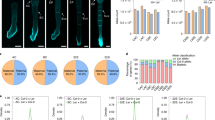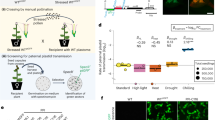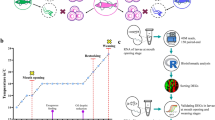Abstract
IT is generally assumed that in species with yolk-rich eggs early embryonic development is sustained by maternally transmitted storage substances in the egg cytoplasm1,2, while embryonic genes become activated later in development. As a rule, the maternally and paternally derived alleles of a particular gene locus start to function simultaneously at a defined developmental stage. But preferential activation of the maternally derived allele has been observed3–7. This prompted the suggestion2,4 that the information required to switch on embryonic structural gene loci is transcribed by the diploid nucleus of the mother during oogenesis. According to this hypothesis, regulatory substances from the egg cytoplasm bind to receptor sequences adjacent to the structural genes, and thus induce their initial derepression. When the parentally derived receptor sequences are identical, the two alleles at the respective structural gene locus become activated synchronously. But when the base sequence of the paternally derived receptor site is different from the maternally transmitted one, for example when the two haploid genomes stem from different species, the recognition of the paternally derived receptor sequence by the regulatory substance of the egg might become difficult or even impossible. This would lead to either transitory or permanent exclusive expression of the maternally transmitted structural gene. Using the first appearance of embryonically specified α-glycerophosphate dehydrogenase (α-GPDH) isozymes as markers during the ontogeny of interspecific hybrid trout, we have now observed preferential activation of the paternally derived alleles. This seems to contradict the model of gene activation outlined here.
This is a preview of subscription content, access via your institution
Access options
Subscribe to this journal
Receive 51 print issues and online access
$199.00 per year
only $3.90 per issue
Buy this article
- Purchase on Springer Link
- Instant access to full article PDF
Prices may be subject to local taxes which are calculated during checkout
Similar content being viewed by others
References
Davidson, E. H., Gene Activity in Early Development (Academic, New York 1968).
Ohno, S., in Interspecific Genome Interaction, 137–150 (Wistar Institute Press, Philadelphia, 1969).
Hitzeroth, H., Klose, J., Ohno, S., and Wolf, U., Biochem. Genet., 1, 287–300 (1968).
Castro-Sierra, E., and Ohno, S., Biochem. Genet., 1, 323–335 (1968).
Goldberg, E., Cuerrier, J. P., and Ward, J. C., Biochem. Genet., 2, 335–350 (1969).
Klose, J., and Wolf, U., Biochem. Genet., 4, 87–92 (1970).
Yamauchi, T., and Goldberg, E., Devl Biol., 39, 63–68 (1974).
Kuhl, P., Diplomarbeit, Univ. Freiburg (1975).
Engel, W., Schmidtke, J., and Wolf, U., Experientia, 27, 1489–1491 (1971).
Pipkin, S. B., and Bremner, T. A., J. exp. Zool., 175, 283–295 (1970).
Whitt, G. S., Cho, P. L., and Childers, W. F., J. exp. Zool., 179, 271–282 (1972).
Whitt, G. S., Childers, W. F., and Cho, P. L., J. Hered., 64, 55–61 (1973).
Author information
Authors and Affiliations
Rights and permissions
About this article
Cite this article
SCHMIDTKE, J., KUHL, P. & ENGEL, W. Transitory hemizygosity of paternally derived alleles in hybrid trout embryos. Nature 260, 319–320 (1976). https://doi.org/10.1038/260319a0
Received:
Accepted:
Issue Date:
DOI: https://doi.org/10.1038/260319a0
This article is cited by
-
Two-dimensional electrophoretic protein patterns of reciprocal hybrids of the mouse strains DBA and C57BL
Biochemical Genetics (1992)
-
Two-dimensional electrophoretic protein patterns of reciprocal hybrids of the mouse strains DBA and C57BL
Biochemical Genetics (1992)
-
Differential activity of maternally and paternally derived chromosome regions in mice
Nature (1985)
-
Absence of developmental incompatibility in hybrids between rainbow trout and two subspecies of cutthroat trout
Biochemical Genetics (1985)
-
A comparative study of embryonic gene expression inDrosophila andEphestia
Wilhelm Roux's Archives of Developmental Biology (1979)
Comments
By submitting a comment you agree to abide by our Terms and Community Guidelines. If you find something abusive or that does not comply with our terms or guidelines please flag it as inappropriate.



